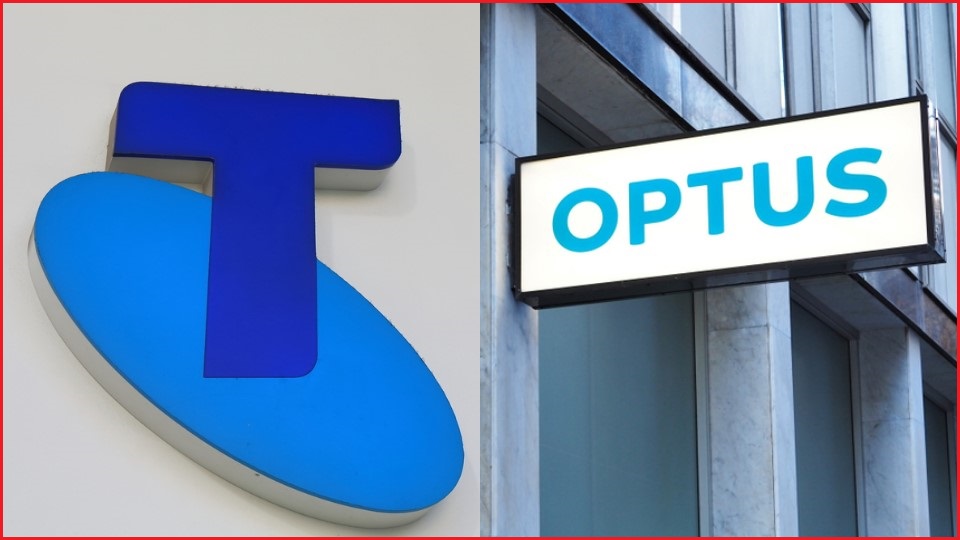Telstra and Optus began the staged shutdowns of their 3G networks on Monday while also complying with new laws that mean 3G and some 4G devices are no longer able to make emergency calls to Triple Zero.
The shutdowns by Australia’s two largest telecommunications companies are expected to be completed by early November.
The closures follow years of planning, two postponements, and recent public awareness campaigns by both the telcos and the federal government as providers continue to focus on improving and expanding their 4G and 5G networks.
TPG Telecom, which owns Vodafone, gradually shut down its 3G network between December 2023 and January 2024.
While Telstra and Optus’ shutdowns began on Monday, states and territories were expected to be impacted at different times.
3G closures will be ‘relatively quick’
Tasmania is the first jurisdiction to have its Telstra 3G network switched off, the company's technology advancement executive Channa Seneviratne said.
“It is a state that doesn’t share borders so we’re able to have better control of the overall experience to ensure the transition is as smooth as possible before we close down the mainland states and territories,” he said.
Telstra’s 3G networks would then be gradually shut down by Monday, 4 November, the company said.
While Telstra would not provide dates for when the shutdown would reach other states and territories, Seneviratne said that while the company was closing its 3G networks “progressively”, it was “not going to be a slow transition” and would be “relatively quick”.
“If you're not sure if your mobile will work after the closure, SMS 3 to 3498 to check so you can act before it's too late,” he said.
Optus, which also would not provide a state-by-state schedule for its 3G shutdown, said it sent more than 10 million warning messages to impacted customers and, like Telstra, had offered thousands of free handsets to customers experiencing financial hardship.
The company’s head of new products, Harvey Wright, said there would be “huge benefits” for 4G and 5G networks after the 3G switch-off.
“Customers will have a better experience on our network once the switch off has occurred,” he said.
Both Telstra and Optus confirmed that some newer 4G and 5G handsets purchased overseas or imported into Australia may not work with local standards, preventing their owners from contacting Triple Zero.
The federal government previously said it was concerned about a sub-set of 4G phones which would continue to work normally after the 3G shutdowns but would still default to 3G for emergency calls because of the way they were configured.
Many of these devices are older, were purchased overseas, or don’t support VoLTE (voice over LTE) — which is what most modern phones use to send voice calls over the same 4G and 5G channels that also carry other mobile data.
Western Australia’s Consumer Protection agency said last week that it had already received complaints from seven people who had spent a combined total of $4,646 importing devices from online retailers which were unusable after the 3G shutdowns.
The telcos have encouraged customers to check if their devices would work using the Australian Mobile Telecommunications Association’s Check My Device tool.
New Triple Zero rules for telcos
A new federal law which came into effect on Monday 28 October meant telecommunications providers were now legally required to prevent mobile phones which could not call Triple Zero from accessing their networks.
This was because those devices only used the 3G network or were 4G devices which relied on 3G for emergency calls.
The Australian Communications and Media Authority (ACMA) said the new rules meant telcos were required to notify customers whose devices were no longer able to call emergency services.
Providers were also required to help customers “access alternative low cost or no-cost mobile phones", ACMA said.
Communications Minister Michelle Rowland said, “While the government supports a safe switchover, it’s important that Australians know that a subset of 4G devices may not be able to call Triple Zero after the switchover, as a result of how they’ve been manufactured.”
Australians have also been urged not to call Triple Zero to test their devices.

Concerns for regions and other 3G devices
The Telstra and Optus 3G shutdowns were originally slated for June 2024, but in May they were pushed back to August, before being pushed back again until the end of October.
The two postponements took place as governments, telcos, industry groups, and regional bodies discussed some organisations’ concerns that regional and rural Australians, the elderly, and the vulnerable might be left without connectivity.
A Senate committee also urged the federal government to delay the scheduled 3G shutdowns in August.
Concerns were raised about devices such as some medical equipment, lifts, farming technology, security systems, and smart watches which rely on 3G networks.
Deb Charlton, chair of the New South Wales Farmers rural affairs committee, said telcos needed to make sure regional and rural Australians were not left behind in the transition.
“While we’re still yet to gauge the full impact of the shutdown on communities, our number one priority remains that we receive an upgrade, not a downgrade, in our connectivity here in the bush,” Charlton said.
“We need reliable connectivity to call our loved ones, conduct our business and make that call for help, if we ever need it – and let’s not forget the medical devices, farm machinery and other technology that all needs to be connected to function.”
State and territory ministers responsible for regional connectivity met with Communications Minister Michelle Rowland on 23 October and agreed “maintenance of public safety is paramount, following the 3G closure”, according to a readout of the meeting.
In total, the federal government said it was investing $2.2 billion in regional communications.
Experienced an issue during Telstra and Optus' 3G shutdowns? Contact Information Age by email here.










